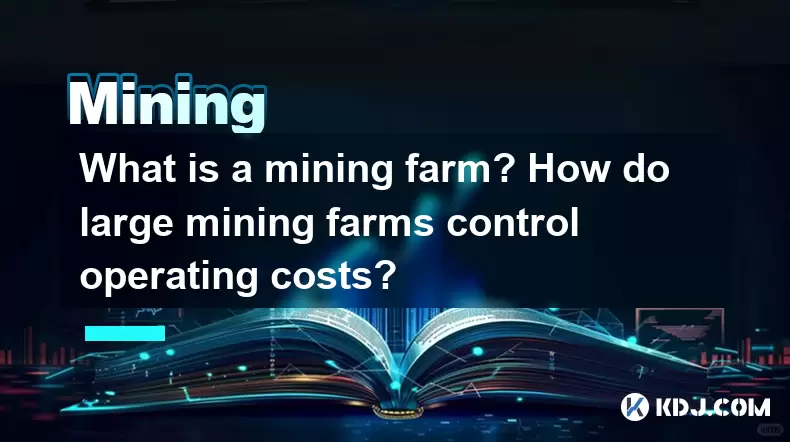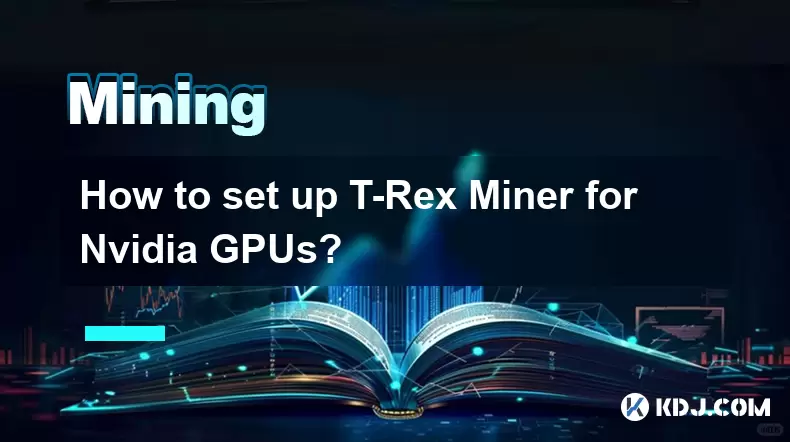-
 Bitcoin
Bitcoin $117600
0.25% -
 Ethereum
Ethereum $4424
0.10% -
 XRP
XRP $3.101
0.50% -
 Tether USDt
Tether USDt $1.001
-0.01% -
 BNB
BNB $836.2
1.26% -
 Solana
Solana $188.8
2.11% -
 USDC
USDC $1.000
0.01% -
 Dogecoin
Dogecoin $0.2301
0.57% -
 TRON
TRON $0.3485
-1.00% -
 Cardano
Cardano $0.9209
-1.34% -
 Hyperliquid
Hyperliquid $46.72
-1.19% -
 Chainlink
Chainlink $22.62
4.84% -
 Stellar
Stellar $0.4275
-0.38% -
 Sui
Sui $3.761
1.91% -
 Bitcoin Cash
Bitcoin Cash $586.7
-0.25% -
 Ethena USDe
Ethena USDe $1.001
0.01% -
 Hedera
Hedera $0.2510
2.06% -
 Avalanche
Avalanche $24.21
2.22% -
 Litecoin
Litecoin $119.7
1.07% -
 Toncoin
Toncoin $3.450
1.06% -
 UNUS SED LEO
UNUS SED LEO $9.411
-0.93% -
 Shiba Inu
Shiba Inu $0.00001298
1.20% -
 Uniswap
Uniswap $10.98
3.25% -
 Polkadot
Polkadot $3.961
2.16% -
 Dai
Dai $1.000
0.00% -
 Bitget Token
Bitget Token $4.642
0.95% -
 Cronos
Cronos $0.1514
0.57% -
 Ethena
Ethena $0.7290
3.78% -
 Monero
Monero $254.1
7.69% -
 Pepe
Pepe $0.00001102
2.47%
What is a mining farm? How do large mining farms control operating costs?
A mining farm is a large-scale operation using many computers to solve complex math problems, validating crypto transactions and adding them to the blockchain.
May 09, 2025 at 11:28 am

A mining farm, in the context of cryptocurrencies, refers to a large-scale operation where numerous computers, often called miners, work together to solve complex mathematical problems to validate transactions and add them to the blockchain. These operations are crucial for the functioning of cryptocurrencies like Bitcoin, which rely on a proof-of-work consensus mechanism. Mining farms can range from small setups in a garage to massive industrial facilities housing thousands of mining rigs.
What is a Mining Farm?
A mining farm is essentially a centralized location where mining hardware is concentrated to maximize efficiency and profitability. Mining farms are designed to handle the high computational demands of cryptocurrency mining by pooling resources and optimizing energy usage. These facilities are equipped with specialized hardware known as ASICs (Application-Specific Integrated Circuits), which are designed specifically for mining cryptocurrencies. The primary goal of a mining farm is to generate a steady stream of cryptocurrency by solving the cryptographic puzzles required to mine new blocks.
Components of a Mining Farm
A typical mining farm consists of several key components that work together to ensure efficient operation. The core components include:
- Mining Rigs: These are the computers that perform the actual mining. They are often equipped with multiple ASICs to increase their hashing power.
- Cooling Systems: Mining generates a significant amount of heat, so efficient cooling systems are essential to prevent overheating and maintain performance.
- Power Supply Units (PSUs): These units provide the necessary electrical power to the mining rigs. High-quality PSUs are crucial for stable operation.
- Networking Equipment: This includes routers and switches that connect the mining rigs to the internet, allowing them to communicate with the blockchain network.
- Monitoring and Management Software: This software helps operators monitor the performance of the mining rigs, manage their operations, and optimize their efficiency.
How Large Mining Farms Control Operating Costs
Operating a large mining farm involves significant costs, primarily related to electricity and hardware maintenance. Large mining farms employ several strategies to control these costs:
- Location Selection: Mining farms are often located in areas where electricity is cheap and abundant. Countries like Iceland and Canada are popular choices due to their low electricity costs and cooler climates, which reduce cooling expenses.
- Energy Efficiency: Operators invest in energy-efficient hardware and cooling systems to minimize electricity consumption. They also use advanced power management techniques to optimize energy usage.
- Bulk Purchasing: By buying mining hardware in bulk, mining farms can negotiate better prices and reduce the cost per unit. This also applies to other necessary components like cooling systems and PSUs.
- Economies of Scale: Large mining farms benefit from economies of scale, which allow them to spread their fixed costs over a larger number of mining rigs. This reduces the cost per hash and increases overall profitability.
- Maintenance and Upgrades: Regular maintenance and timely upgrades help keep the mining rigs running efficiently. Mining farms often have dedicated teams to handle these tasks, ensuring that the hardware operates at peak performance.
Cooling Systems in Mining Farms
One of the most critical aspects of running a mining farm is managing the heat generated by the mining rigs. Effective cooling systems are essential for maintaining the performance and longevity of the hardware. Mining farms employ various cooling strategies, including:
- Air Cooling: This is the most common method, where fans and air conditioning units are used to circulate cool air and remove heat from the mining rigs.
- Liquid Cooling: Some mining farms use liquid cooling systems, which are more efficient than air cooling. These systems use a liquid coolant to absorb heat from the mining rigs and transfer it away.
- Immersion Cooling: In this method, the mining rigs are submerged in a non-conductive liquid that dissipates heat directly from the components. Immersion cooling is highly efficient but can be more complex to implement.
Power Management in Mining Farms
Power management is another crucial aspect of controlling operating costs in a mining farm. Efficient power management involves:
- Power Usage Effectiveness (PUE): Mining farms aim to achieve a low PUE, which measures the ratio of total energy used by the facility to the energy used by the mining rigs. A lower PUE indicates more efficient energy use.
- Load Balancing: Operators use load balancing techniques to distribute the workload evenly across the mining rigs, preventing any single rig from being overworked and consuming excessive power.
- Power Factor Correction: This involves using devices to improve the power factor of the electrical system, reducing energy losses and improving overall efficiency.
- Renewable Energy Sources: Some mining farms are exploring the use of renewable energy sources, such as solar or wind power, to reduce their reliance on traditional electricity and lower their operating costs.
Hardware Maintenance and Upgrades
Maintaining and upgrading the hardware in a mining farm is essential for ensuring long-term profitability. Key aspects of hardware maintenance and upgrades include:
- Regular Cleaning: Dust and debris can accumulate on the mining rigs, reducing their efficiency and causing overheating. Regular cleaning helps maintain optimal performance.
- Firmware Updates: Mining rigs often require firmware updates to improve their performance and compatibility with the latest mining software. Mining farms must stay up-to-date with these updates.
- Component Replacements: Over time, components like fans, PSUs, and even ASICs may need to be replaced due to wear and tear. Mining farms keep spare parts on hand to minimize downtime.
- Upgrading to Newer Hardware: As mining difficulty increases and older hardware becomes less profitable, mining farms must upgrade to newer, more efficient mining rigs. This involves careful planning and budgeting to ensure a smooth transition.
Frequently Asked Questions
Q: How does a mining farm differ from solo mining?
A: A mining farm is a large-scale operation that pools resources and hardware to mine cryptocurrencies more efficiently. Solo mining, on the other hand, involves an individual miner using their own hardware to mine cryptocurrencies independently. Mining farms have a higher hashing power and can solve cryptographic puzzles more quickly, leading to more consistent rewards.
Q: What are the environmental concerns associated with mining farms?
A: Mining farms consume large amounts of electricity, which can contribute to carbon emissions if the energy comes from fossil fuels. Some mining farms are addressing these concerns by using renewable energy sources and implementing energy-efficient practices.
Q: How do mining farms handle the noise generated by their operations?
A: Mining rigs can be quite noisy due to their cooling fans and other components. Mining farms often use soundproofing materials and locate their facilities in areas where noise pollution is less of an issue. Some also implement noise reduction strategies like using quieter fans and isolating the mining rigs in soundproof enclosures.
Q: Can individuals invest in a mining farm?
A: Yes, some mining farms offer investment opportunities where individuals can purchase a share of the operation and receive a portion of the profits. These investments can be a way for individuals to participate in cryptocurrency mining without managing the hardware themselves.
Disclaimer:info@kdj.com
The information provided is not trading advice. kdj.com does not assume any responsibility for any investments made based on the information provided in this article. Cryptocurrencies are highly volatile and it is highly recommended that you invest with caution after thorough research!
If you believe that the content used on this website infringes your copyright, please contact us immediately (info@kdj.com) and we will delete it promptly.
- Kazakhstan's Crypto Leap: Bitcoin ETF and Central Asia's Digital Finance Future
- 2025-08-13 12:45:19
- BlockDAG Presale Blazes Past $371M: Fundraising Frenzy Fuels Crypto Sensation
- 2025-08-13 13:05:21
- Meme Coins: Chasing the 2025 Surge – Which Will Moonshot?
- 2025-08-13 10:25:23
- Bitcoin's Wild Ride: Rally, Pullback, and What's Next
- 2025-08-13 10:25:23
- Bitcoin, Bitmax, and Institutional Demand: A New Era of Crypto Investment
- 2025-08-13 10:45:12
- Solana, ROAM, and Airdrops: What's the Buzz in 2025?
- 2025-08-13 11:35:13
Related knowledge

How to configure Phoenix Miner for AMD GPUs?
Aug 11,2025 at 03:21am
Understanding Phoenix Miner and Its Compatibility with AMD GPUsPhoenix Miner is a lightweight, high-performance Ethereum mining software designed for ...

How to set up T-Rex Miner for Nvidia GPUs?
Aug 10,2025 at 12:07am
Understanding T-Rex Miner and Its Compatibility with Nvidia GPUsT-Rex Miner is a high-performance mining software designed specifically for Nvidia GPU...

What is "proof-of-work" and how does it relate to mining?
Aug 07,2025 at 02:03pm
Understanding the Concept of Proof-of-WorkProof-of-work (PoW) is a consensus mechanism used in blockchain networks to validate transactions and secure...

How to choose a crypto wallet for your mined coins?
Aug 13,2025 at 11:36am
Understanding the Types of Crypto Wallets for Mined CoinsWhen selecting a crypto wallet for your mined coins, the first step is to understand the diff...

What are the differences between mining on Windows vs. Linux?
Aug 06,2025 at 11:29pm
Overview of Cryptocurrency Mining PlatformsCryptocurrency mining involves using computational power to solve complex cryptographic puzzles and validat...

How to use an old computer for cryptocurrency mining?
Aug 07,2025 at 12:42pm
Understanding the Feasibility of Using an Old Computer for MiningUsing an old computer for cryptocurrency mining may seem outdated, but it is still te...

How to configure Phoenix Miner for AMD GPUs?
Aug 11,2025 at 03:21am
Understanding Phoenix Miner and Its Compatibility with AMD GPUsPhoenix Miner is a lightweight, high-performance Ethereum mining software designed for ...

How to set up T-Rex Miner for Nvidia GPUs?
Aug 10,2025 at 12:07am
Understanding T-Rex Miner and Its Compatibility with Nvidia GPUsT-Rex Miner is a high-performance mining software designed specifically for Nvidia GPU...

What is "proof-of-work" and how does it relate to mining?
Aug 07,2025 at 02:03pm
Understanding the Concept of Proof-of-WorkProof-of-work (PoW) is a consensus mechanism used in blockchain networks to validate transactions and secure...

How to choose a crypto wallet for your mined coins?
Aug 13,2025 at 11:36am
Understanding the Types of Crypto Wallets for Mined CoinsWhen selecting a crypto wallet for your mined coins, the first step is to understand the diff...

What are the differences between mining on Windows vs. Linux?
Aug 06,2025 at 11:29pm
Overview of Cryptocurrency Mining PlatformsCryptocurrency mining involves using computational power to solve complex cryptographic puzzles and validat...

How to use an old computer for cryptocurrency mining?
Aug 07,2025 at 12:42pm
Understanding the Feasibility of Using an Old Computer for MiningUsing an old computer for cryptocurrency mining may seem outdated, but it is still te...
See all articles

























































































